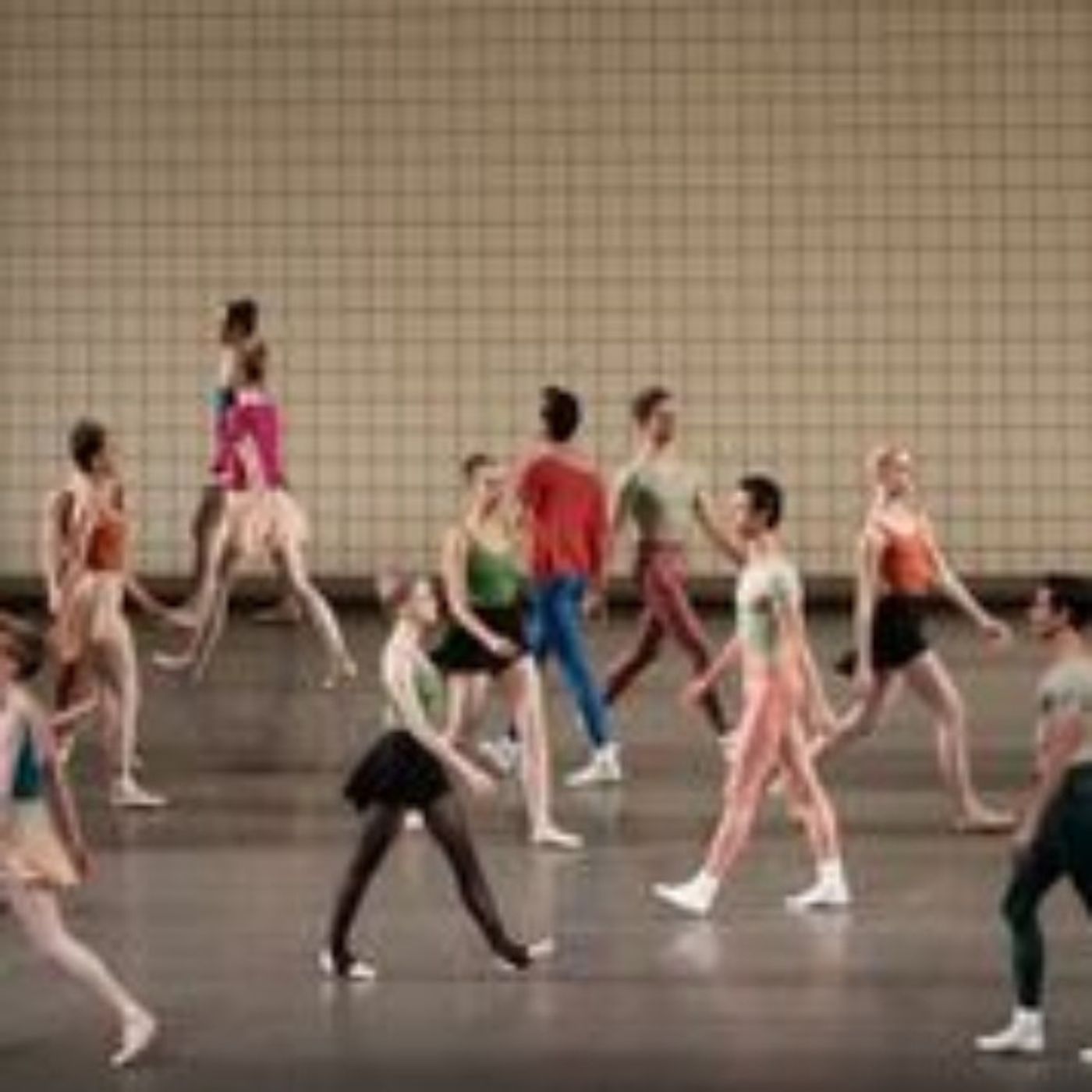Review: NYC BALLET: ROBBINS CENTENNIAL (BERNSTEIN, GLASS, AND VERDI) at The Kennedy Center
 Jerome Robbins is perhaps best known for his choreography for the musical and movie sensation known as "West Side Story," but his choreography credits run far deeper than graceful gangsters. For his Centennial, the New York City Ballet chose to honor its former co-ballet master in chief by highlighting his range through three works: the modern and minimalist "Glass Pieces," the fun and light-hearted "Fancy Free," and the classical and elegant "The Four Seasons." Each is distinct, and collectively the productions and the wonderful performances bring to life the work of a master.
Jerome Robbins is perhaps best known for his choreography for the musical and movie sensation known as "West Side Story," but his choreography credits run far deeper than graceful gangsters. For his Centennial, the New York City Ballet chose to honor its former co-ballet master in chief by highlighting his range through three works: the modern and minimalist "Glass Pieces," the fun and light-hearted "Fancy Free," and the classical and elegant "The Four Seasons." Each is distinct, and collectively the productions and the wonderful performances bring to life the work of a master.
"Glass Pieces" serves as a vibrant opening act. The stage is quickly filled with brightly-dressed dancers criss-crossing the stage in an organized chaos that evokes memories of the opening of "A Chorus Line" (the costumes and colors may be helping that comparison), and group movements that nodded at Robbins' famous choreography in "West Side Story." Much like Glass' music itself, the chaos has an underlying order that drives the piece, and the order makes itself increasingly apparent as the audience is drawn into identifying patterns. There's a precision and strict attention to each detail of movement that drives this performance - which is why it was jarring in the rare moments when someone appeared slightly off-time, and why my companion wondered if those instances were intentional. I should note that, due to minor injuries, some of the dancers were substitutes, so this change might also be the culprit. That said, the precision and organization make for a visually stunning piece, but also one that led me to focus so intensely on the purpose behind only one woman wearing a red tank top in the final movement that I forgot to enjoy the celebration of music and movement on stage.
"Fancy Free," on the other hand, is nothing short of enjoyable. The ballet that inspired the musical "On the Town" is a crowd-pleaser, and it was lovely to see the dancers' acting and comedy skills on display. Roman Mejia, Harrison Coll, and Sebastian Villarini-Velez immediately draw in the audience to share in their wild night on leave, and deliver equally impressive group and solo performances; the dance in which Coll woos Lauren King's character was also a standout moment among an act full of enjoyable moments. The storyline has held up surprisingly well over the years, with one glaring exception: when the Three Sailors first encounter a woman, they try to persuade her to join them for the evening by stealing her purse and essentially stalking her until she relents. While this may have been unremarkable in 1944, in the age of #metoo there was an audible cringe from the audience during this segment, and applause when she initially told the sailors off and marched offstage (when she returned, there were a few disappointed groans as well, not for the dancer's return, but for the understanding that she had been badgered into joining the men despite her initial refusal). Later, when the three men find themselves fighting over two women, the audience enthusiastically supported the women's decision to leave together. And yet, even with this outdated and troubling moment, the performance was a crowd (and personal) favorite for the evening.
The final act, set to Verdi's "The Four Seasons," was almost disappointing on the heels of "Fancy Free." Though it allows for all members of the company to be highlighted, the ballet itself simply feels beautifully danced but lacking in any real draw. The production centers around the premise of a Greco-Roman performance within a performance in which each season has a moment to shine. But the flowers wrapping around the columns flanking the stage impose a sense of artificiality that makes it difficult to be as completely drawn into this act as the previous two, and it often feels as though this ballet is ticking boxes. Barring a brief glimmer of spirit brought on by the men of Spring, the first three-quarters of this act feels serviceable at best, and I couldn't help but find my mind wandering a bit. But Fall brings Daniel Ulbricht in a delightfully impish role, and for that final season the show comes back to life.
The New York City Ballet lives up to its reputation, and shows an impressive range in this performance. The Corps de Ballet is only at the Kennedy Center through April 1st, but it's worth making the time to catch them while they're in town.
Photo Credit: Paul Kolnik
Reader Reviews
Videos


